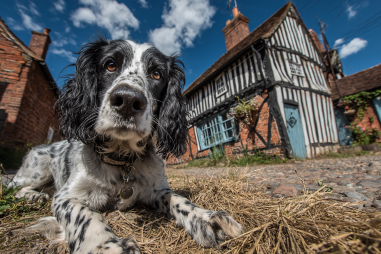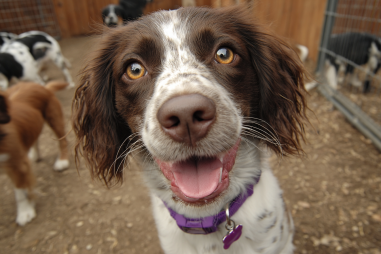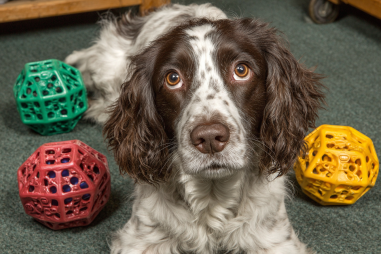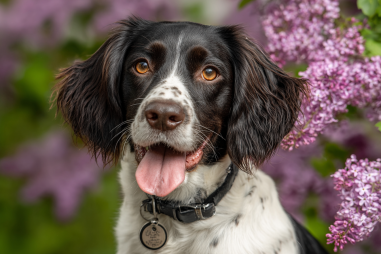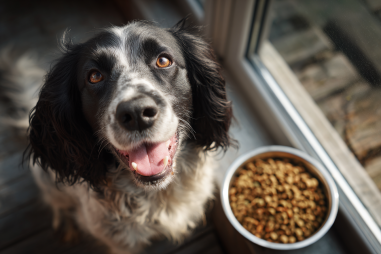Watching your English Springer Spaniel puppy grow and develop is a truly rewarding experience. These lively, affectionate dogs bring joy and energy to any home, but their first year is filled with many stages and milestones that are important to understand. By recognizing these key developments, you can provide the best care and support to help your puppy thrive physically, emotionally, and socially. This guide will walk you through the essential milestones to expect in your English Springer Spaniel pup’s first year of life, along with tips on training readiness, health care, and managing common challenges.
Physical Growth Stages
English Springer Spaniel puppies grow rapidly in their first few months. At birth, they are tiny and helpless, but by about eight weeks old, they’ve typically doubled or tripled their weight. The first physical milestone is their ability to open their eyes and ears, which usually happens between 10 and 14 days after birth. This marks the beginning of sensory exploration.
Between 3 and 6 weeks, puppies start developing their coordination, learning to walk more steadily and becoming more playful and curious about their environment. This is also the time when they begin teething, which can be a challenging phase for both pup and owner due to chewing behaviors.
By 8 to 12 weeks, your English Springer Spaniel should be quite active and inquisitive, with strong physical development that supports running, jumping, and social play. Weight gain will continue at a steady pace, but growth will start to slow after about 6 months as the puppy approaches adolescence.
After 6 months, muscle and bone development intensify, preparing your puppy for adult levels of activity. Full physical maturity for English Springer Spaniels is typically reached around 12 to 18 months of age, depending on genetics and nutrition.
Behavioral Developments
Behaviorally, English Springer Spaniel puppies are lively, intelligent, and eager to engage with their surroundings. Their early weeks are dominated by exploratory behaviors, where they begin to investigate everything with their mouths, noses, and paws. From 3 to 8 weeks, puppies learn essential communication skills with littermates, including bite inhibition and social cues.
Once separated from their littermates at around 8 weeks, puppies may start to exhibit specific personality traits such as playfulness, curiosity, and sometimes shy or cautious tendencies. This period is critical for exposing them to new stimuli to build confidence and reduce fearfulness later on.
Between 8 and 16 weeks, your puppy will likely show bursts of energy alongside sleepy downtime, which helps their brain and body recover and develop. It is also common to see some teething-related chewing and possible nipping or mouthing behavior—offering appropriate toys and early training can effectively manage these behaviors.
Social and Emotional Milestones
Socialization is a cornerstone of raising a well-adjusted English Springer Spaniel. The prime socialization window spans from about 3 to 14 weeks, with 8 to 12 weeks being the most sensitive time to introduce your puppy to a variety of experiences. During this phase, it’s beneficial to gradually expose your puppy to:
- Different people (men, women, children, people wearing hats or sunglasses)
- Other dogs and animals
- Various environments such as parks, streets, and car rides
- Household sounds like vacuum cleaners, doorbells, and television
Providing positive experiences during socialization helps prevent fear and anxiety issues later on. Emotionally, puppies also begin forming their bond with you during this time, seeking comfort and guidance. From about 4 months onward, some puppies may experience a developmental phase called “fear periods,” where they become wary of new stimuli. Patience and gentle reassurance are key here.
Vaccination and Health Check Timelines
Keeping your English Springer Spaniel puppy healthy requires a carefully followed vaccination and health check schedule. Initial vaccinations usually begin at 6 to 8 weeks of age and cover common canine diseases like parvovirus, distemper, and adenovirus. The typical vaccination protocol involves several rounds, with boosters at 12 and 16 weeks.
Your veterinarian will also screen for parasites such as worms and fleas, which are common concerns in puppies. Regular stool checks and deworming treatments are essential in the first months.
Routine veterinary visits during the first year also provide opportunities to monitor growth, assess development, and catch any early signs of health problems. Discuss spaying or neutering options with your vet, usually recommended around 6 months old or later depending on your dog’s health.
Training Readiness
English Springer Spaniels are highly trainable, smart, and eager to please, but proper timing is important for effective training. House training and basic commands like “sit,” “stay,” and “come” can start as early as 8 weeks, though sessions should be very short to match the puppy’s limited attention span.
Socialization training is equally crucial, helping your puppy learn to interact politely with other dogs and people. By 12 weeks, your Springer Spaniel puppy is generally ready for more structured training, including leash walking and crate training.
Consistency, positive reinforcement, and patience are your best tools. Avoid harsh corrections or punishments, as these can harm your puppy’s confidence and damage the bond you are building.
Preparing for Adolescence
Adolescence in English Springer Spaniels typically starts around 6 months and can last until 18 months. This period brings noticeable changes in behavior and energy levels. Your once easy-going puppy might test boundaries, become more independent, or display stubbornness.
Physically, your dog might look gangly as they grow into their adult proportions. This is a time to maintain consistent training to reinforce rules and good behavior. Mental stimulation remains crucial, as adolescent dogs are prone to boredom which can lead to destructive habits.
Consider upping exercise routines to expend excess energy and provide puzzle toys or learning games to keep their brains engaged. Also, continue socializing and exposing your dog to new environments to help solidify confident, friendly behaviors.
Common Challenges and Support Tips
Raising an English Springer Spaniel puppy sometimes includes navigating challenges such as separation anxiety, chewing issues, or fear responses. Being proactive helps minimize difficulties before they become ingrained habits.
- Separation Anxiety: Practice gradual departures starting from just a few seconds to longer absences. Provide toys and create a cozy, safe area like a crate.
- Chewing and Mouthing: Offer plenty of appropriate chew toys and redirect inappropriate chewing calmly. Avoid harsh reprimands, supporting positive reinforcement instead.
- Fear and Sensitivity: Stay patient and expose your puppy slowly to feared objects or noises. Use treats and praise to build positive associations.
Consistency and understanding are vital throughout your puppy’s first year. If you encounter persistent issues, consulting a professional dog trainer or animal behaviorist can make a big difference.
Watching your English Springer Spaniel puppy grow from a tiny bundle of energy into a confident and loving adult is a wonderful journey. By understanding and supporting their physical, social, and emotional milestones, you’ll help your puppy develop into a happy, healthy companion for many years to come.


